
How to Use 12V Battery Pack: Examples, Pinouts, and Specs
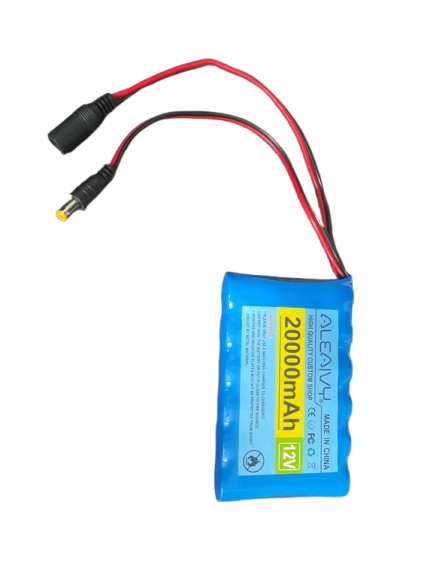
 Design with 12V Battery Pack in Cirkit Designer
Design with 12V Battery Pack in Cirkit DesignerIntroduction
The 12V Battery Pack (Manufacturer: Arduino, Part ID: UNO) is a versatile power source designed to provide a nominal voltage of 12 volts. It is available in both rechargeable and non-rechargeable variants, making it suitable for a wide range of applications. This battery pack is commonly used to power electronic devices, circuits, and microcontroller-based projects, including Arduino boards. Its compact design and reliable performance make it an essential component for portable and stationary systems.
Explore Projects Built with 12V Battery Pack
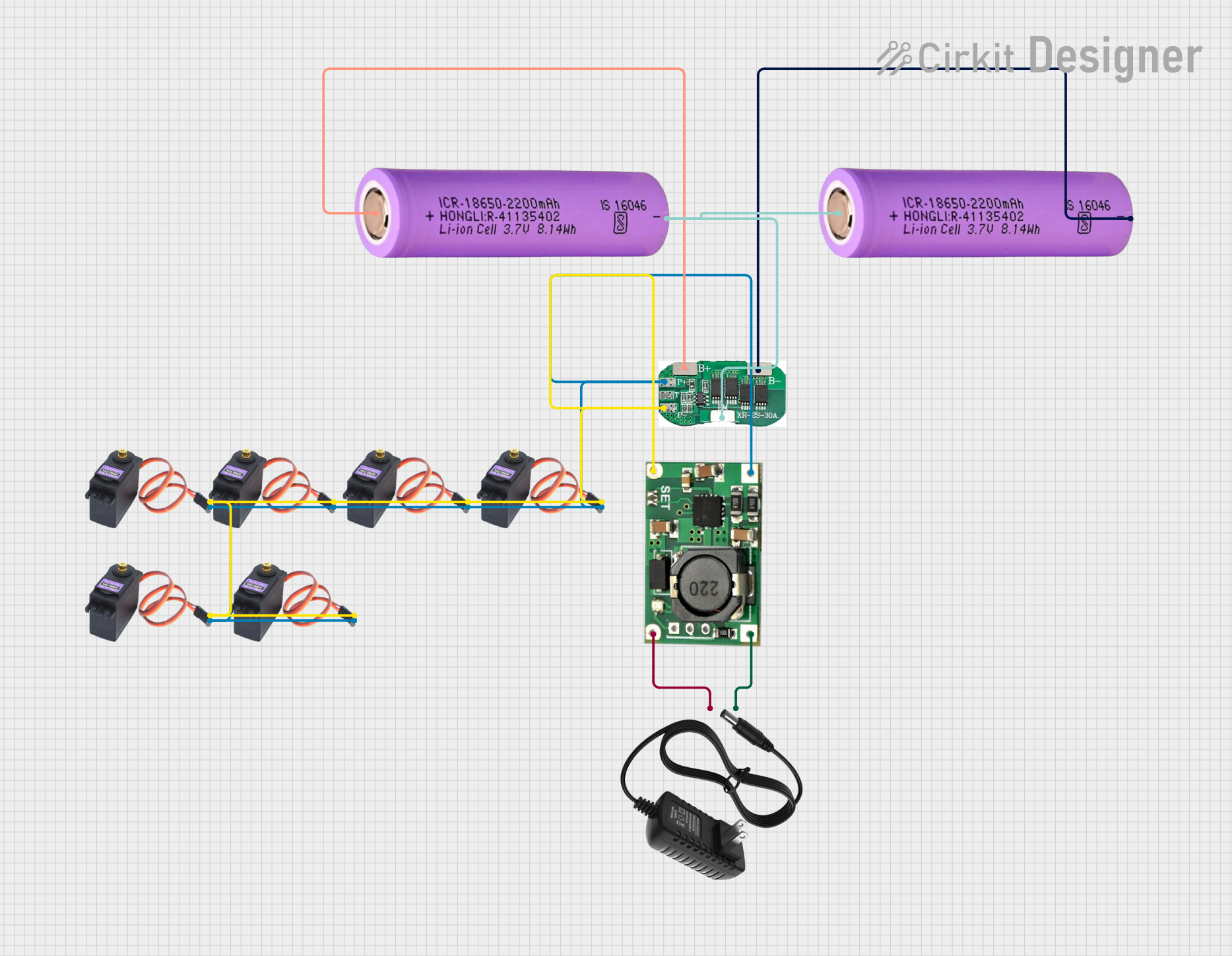
 Open Project in Cirkit Designer
Open Project in Cirkit Designer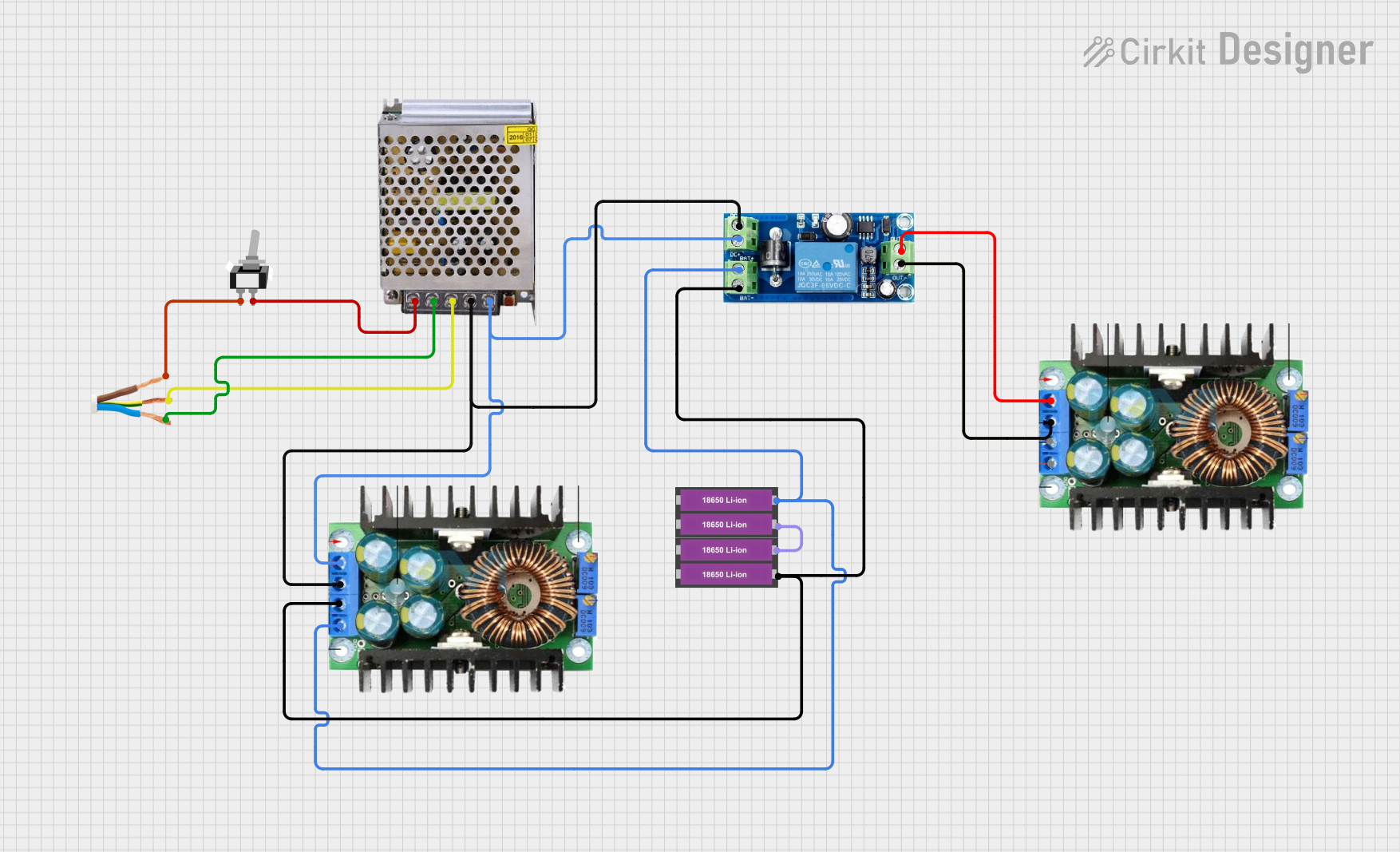
 Open Project in Cirkit Designer
Open Project in Cirkit Designer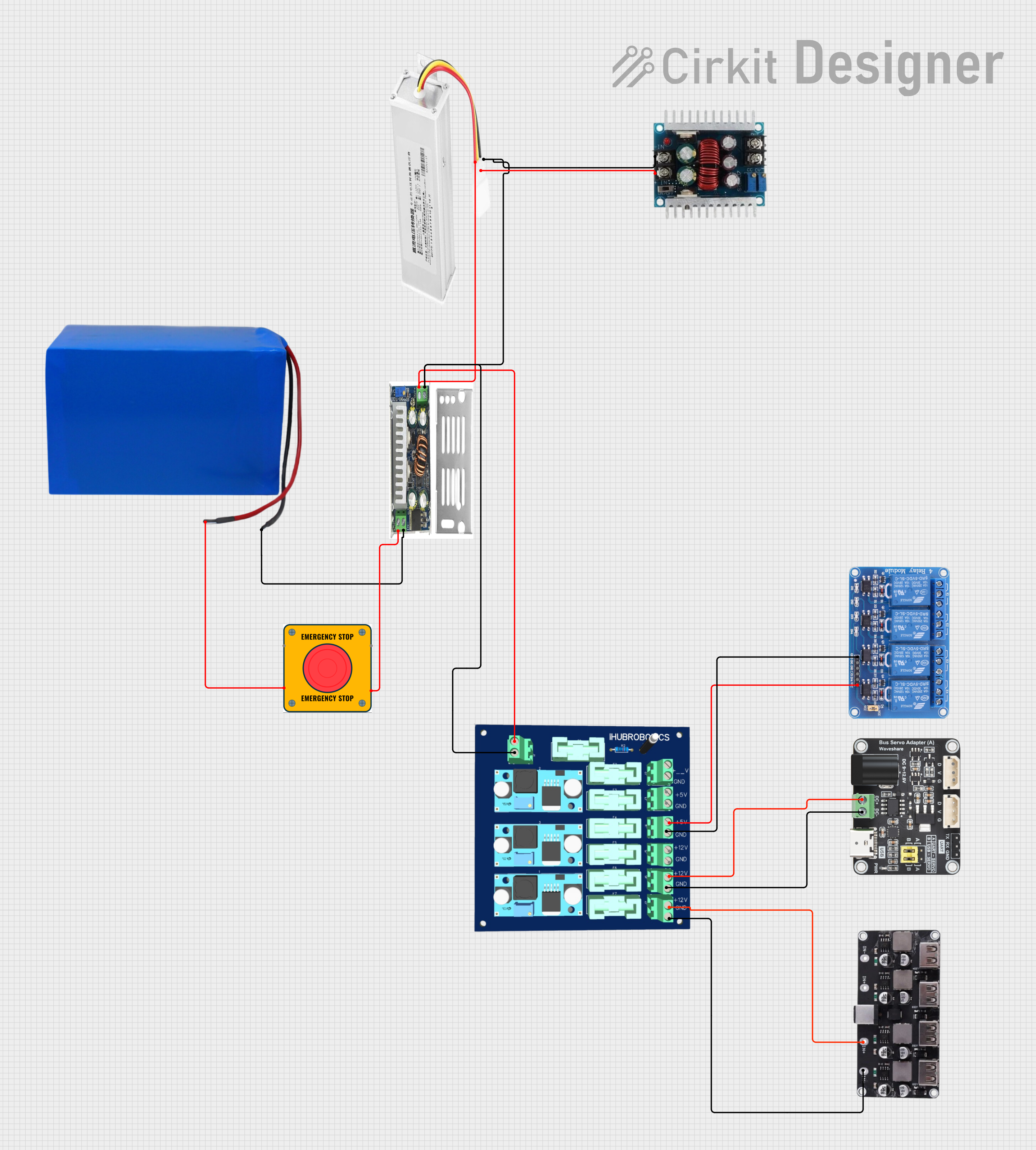
 Open Project in Cirkit Designer
Open Project in Cirkit Designer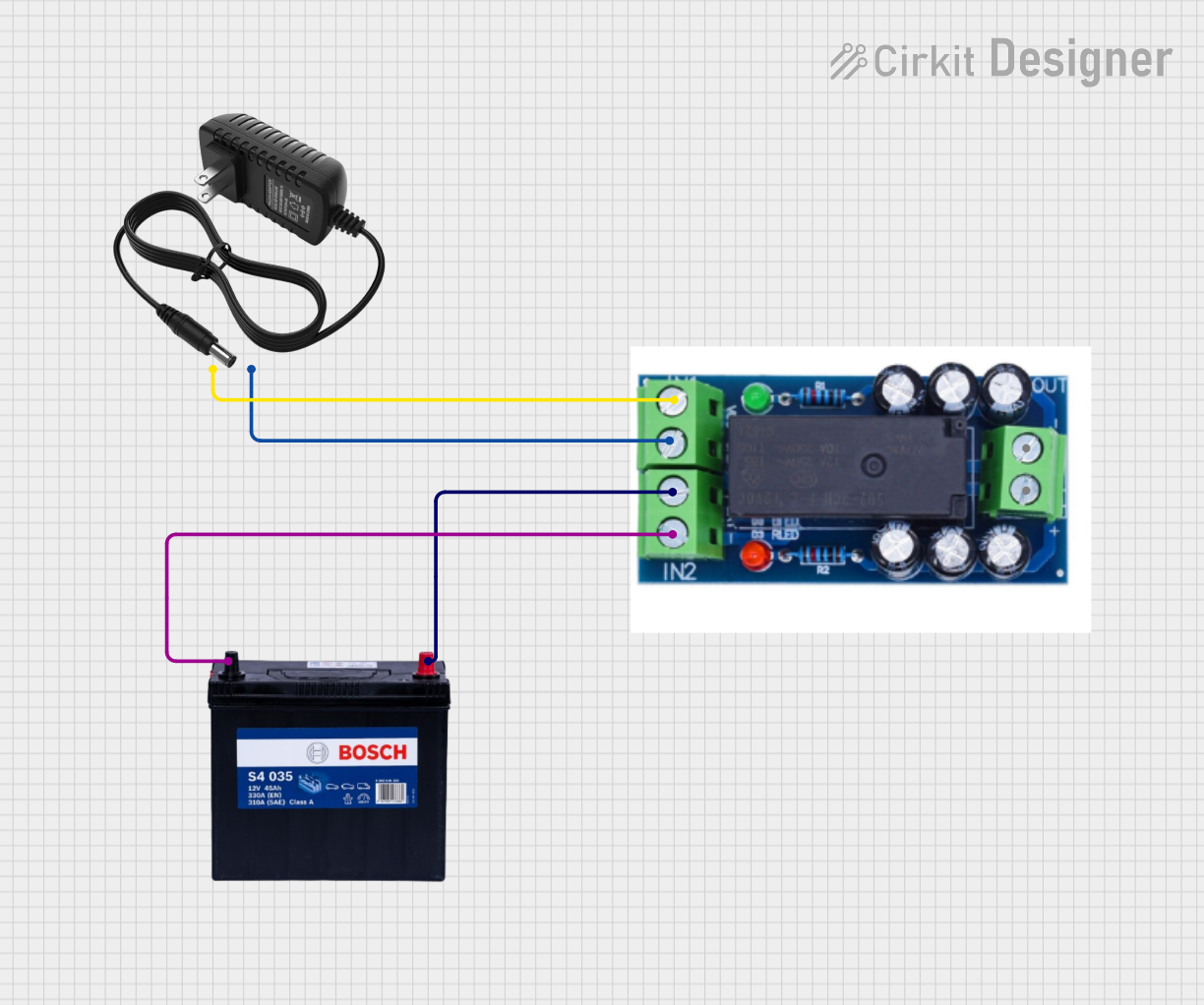
 Open Project in Cirkit Designer
Open Project in Cirkit DesignerExplore Projects Built with 12V Battery Pack

 Open Project in Cirkit Designer
Open Project in Cirkit Designer
 Open Project in Cirkit Designer
Open Project in Cirkit Designer
 Open Project in Cirkit Designer
Open Project in Cirkit Designer
 Open Project in Cirkit Designer
Open Project in Cirkit DesignerCommon Applications and Use Cases
- Powering Arduino-based projects and other microcontrollers
- Robotics and automation systems
- Portable electronic devices
- Backup power supplies for small circuits
- DIY electronics and prototyping
Technical Specifications
The following table outlines the key technical details of the 12V Battery Pack:
| Parameter | Specification |
|---|---|
| Nominal Voltage | 12V |
| Capacity | Varies (e.g., 1000mAh, 2000mAh, etc.) |
| Chemistry | Lithium-ion, Lead-acid, or NiMH |
| Rechargeable | Yes (for rechargeable variants) |
| Maximum Discharge Current | Depends on model (e.g., 1A to 10A) |
| Operating Temperature | -20°C to 60°C |
| Dimensions | Varies by model |
| Weight | Varies by model |
Pin Configuration and Descriptions
The 12V Battery Pack typically has two terminals for connection:
| Pin/Terminal | Description |
|---|---|
| Positive (+) | Connects to the positive side of the circuit |
| Negative (-) | Connects to the ground or negative side of the circuit |
Note: Some battery packs may include additional features such as built-in protection circuits or connectors. Refer to the specific model's datasheet for more details.
Usage Instructions
How to Use the 12V Battery Pack in a Circuit
- Identify the Terminals: Locate the positive (+) and negative (-) terminals on the battery pack.
- Connect to the Circuit:
- Connect the positive terminal to the positive input of your circuit.
- Connect the negative terminal to the ground or negative input of your circuit.
- Use Proper Connectors: Use appropriate connectors or wires to ensure a secure and reliable connection.
- Monitor Voltage: Regularly check the battery voltage to ensure it remains within the operating range of your circuit.
Important Considerations and Best Practices
- Polarity: Always ensure correct polarity when connecting the battery to avoid damage to the circuit.
- Current Rating: Verify that the battery's maximum discharge current meets the requirements of your circuit.
- Charging (for Rechargeable Batteries):
- Use a compatible charger designed for the specific battery chemistry (e.g., Li-ion, NiMH).
- Avoid overcharging or deep discharging the battery to prolong its lifespan.
- Safety: Do not short-circuit the terminals, expose the battery to extreme temperatures, or puncture the casing.
- Storage: Store the battery in a cool, dry place when not in use.
Example: Connecting a 12V Battery Pack to an Arduino UNO
The 12V Battery Pack can be used to power an Arduino UNO via the VIN pin. Below is an example circuit and code:
Circuit Connection
- Connect the positive terminal of the battery pack to the VIN pin on the Arduino UNO.
- Connect the negative terminal of the battery pack to the GND pin on the Arduino UNO.
Example Code
// Example code to blink an LED using an Arduino UNO powered by a 12V Battery Pack
const int ledPin = 13; // Pin connected to the built-in LED on the Arduino UNO
void setup() {
pinMode(ledPin, OUTPUT); // Set the LED pin as an output
}
void loop() {
digitalWrite(ledPin, HIGH); // Turn the LED on
delay(1000); // Wait for 1 second
digitalWrite(ledPin, LOW); // Turn the LED off
delay(1000); // Wait for 1 second
}
Note: Ensure the Arduino UNO's onboard voltage regulator is functioning properly to step down the 12V input to the required 5V operating voltage.
Troubleshooting and FAQs
Common Issues and Solutions
Battery Not Powering the Circuit:
- Cause: Incorrect polarity or loose connections.
- Solution: Double-check the connections and ensure proper polarity.
Battery Drains Quickly:
- Cause: High current draw or an old/degraded battery.
- Solution: Use a battery with a higher capacity or replace the battery if it is old.
Overheating:
- Cause: Excessive current draw or short circuit.
- Solution: Ensure the circuit's current requirements are within the battery's discharge rating. Check for short circuits.
Arduino UNO Not Powering On:
- Cause: Insufficient voltage or faulty connections.
- Solution: Verify the battery voltage is at least 7V (minimum for VIN pin) and check all connections.
FAQs
Q: Can I use a 12V Battery Pack to power other Arduino boards?
A: Yes, most Arduino boards with a VIN pin can be powered by a 12V Battery Pack. Ensure the board's voltage regulator supports 12V input.
Q: How do I know if my battery is rechargeable?
A: Check the label or datasheet of the battery. Rechargeable batteries are typically marked as "rechargeable" and specify the charging voltage/current.
Q: Can I connect multiple 12V Battery Packs in series or parallel?
A: Yes, but ensure proper balancing and protection circuits are used to avoid overvoltage or uneven discharge.
Q: What is the typical lifespan of a 12V Battery Pack?
A: The lifespan depends on the battery chemistry and usage. For example, Li-ion batteries typically last 300-500 charge cycles.
By following this documentation, you can effectively use the 12V Battery Pack in your projects while ensuring safety and optimal performance.